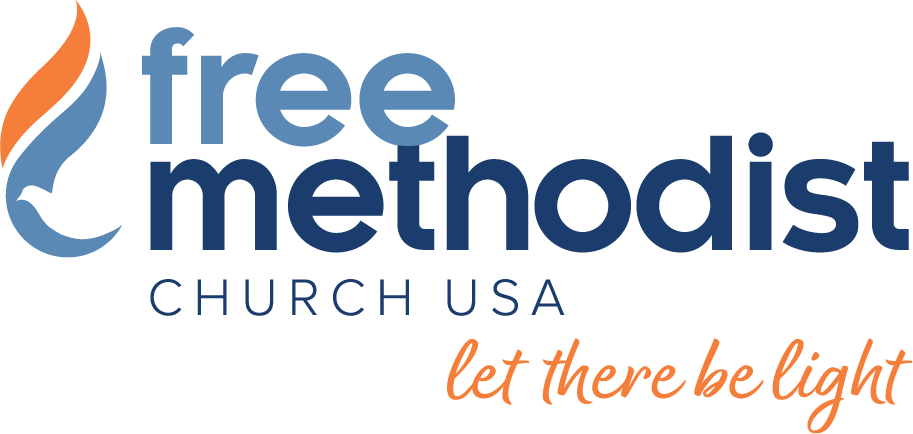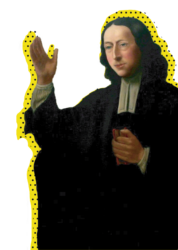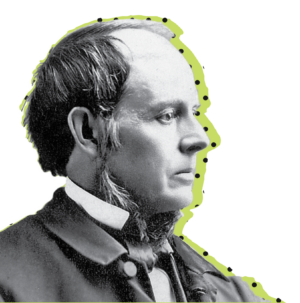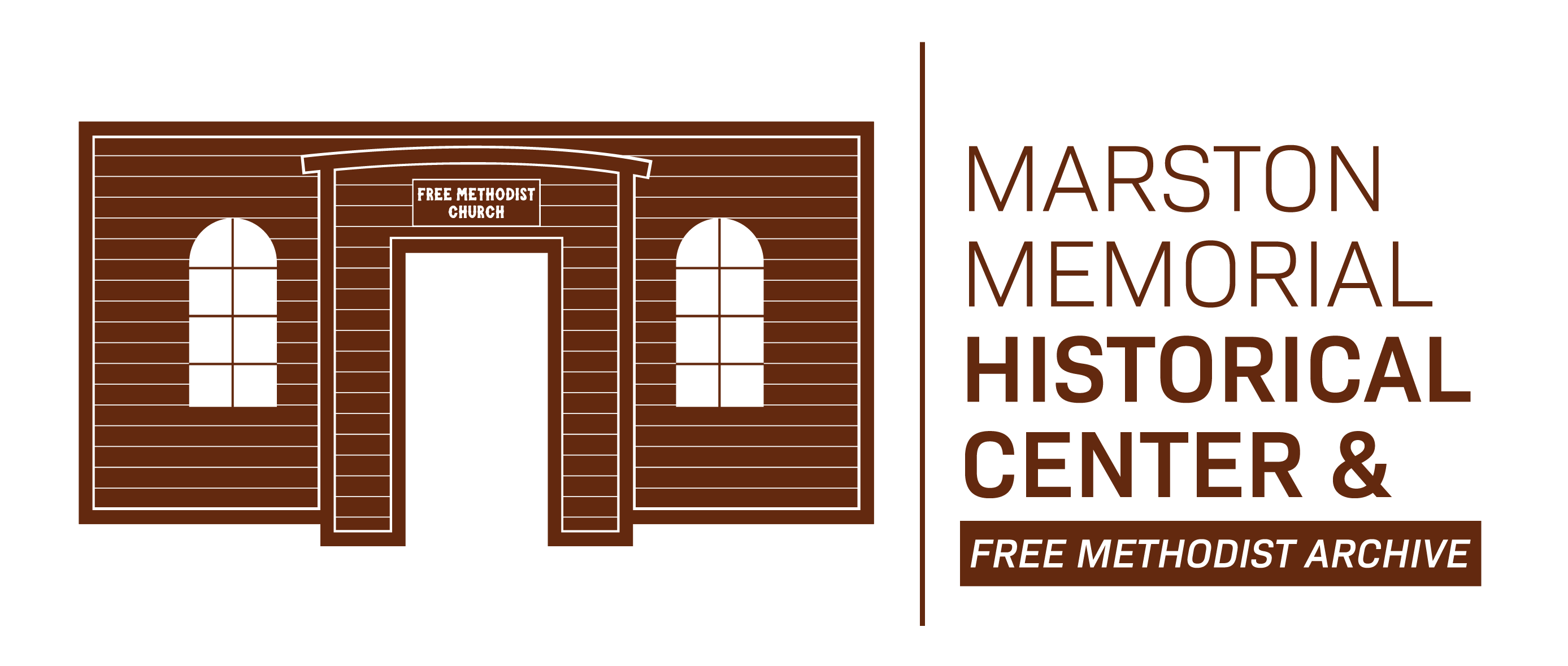History of the Free Methodist Church
Early Methodism Timeline
The Story of John Wesley
Free Methodism Timeline
The Story of B.T. Roberts
Historical Resources
Early Methodism
Timeline
1728
John Wesley was ordained as an Anglican priest in the Church of England.
1729
John Wesley started “Methodist” Holy Clubs at Oxford.
1735
John Wesley became a missionary to Georgia in New England.
1738
Aldersgate Experience: John Wesley’s heart was “strangely warmed,” which brought him assurance of salvation and empowerment for ministry.
1739
The “Method” begins: Class Meetings, field preaching, and lay preachers.
1784
The Methodist Episcopal Church is formed.
A print version of this timeline is available in You are the Church: Covenant Membership in the Free Methodist Church, available through the Light + Life Bookstore.
John Wesley was born in 1703 in Epworth, England to Reverend Samuel and Susanna Wesley. They all lived in a little cottage. They learned to share and to be grateful for every meal they had. His mother made time for each child, spending one hour a week alone with each of them to talk about God and answer their questions.
One night, when John was a young boy, he awoke to strange sounds and smells. He heard shouting and a crackling noise, and smelled smoke! The house was on fire! The other children were following the nurse downstairs out of the cottage. John got up to go when suddenly- bang! The wind blew the door shut! He opened it and the flames leapt up at him. He pushed the door shut and got to a window. He pushed and pushed and finally the window opened. John cried out and his parents looked up in horror. John’s mother tried to rush into the burning house but others held her back because no one could get up the burning stairs. His father tried to reach him but couldn’t. They dropped to their knees and prayed. A strong boy climbed on a man’s shoulders next to the cottage, and they were finally able to bring John down safely before the cottage collapsed.
His parents hugged him tightly and thanked God. They said, “John has been snatched as a brand from the burning.” A brand was a stick used to start a fire. This was a reference to Zechariah 3:2. This meant that John had been saved from the fire just in time. It also refers to God saving us from the consequences of our sin. God had plans to use John Wesley in wonderful ways for His Kingdom.
When he was 11, John got a scholarship to go away to school. It was difficult because there was lots of bullying of the younger boys like John. But the younger boys liked him because he was such a good storyteller.
Later, John went to Oxford University to study, where his brother Charles joined him. John had a daily schedule to spend his time wisely so he could study well, but also so he could spend time helping the needy around him. He saw that they were poor in money, but also poor in goodness and mercy and spiritual growth. Charles got together a group of students who wanted to be serious about studying about God and helping others, including those in prison and the poor. This group came to be called the Holy Club. John also joined the Holy Club, and brought his methodical way of doing things. That means that he had a planned way of doing things, instead of being disorganized or doing things whenever he felt like it. Other young men teased them and called them the Methodists. That’s how the Methodist church got its name! What the mean young men intended as a curse, God turned into a blessing!
In 1735, John and Charles sailed to America as missionaries. John wanted to convert the Native American people, but he was assigned to be the colony pastor. He struggled in preaching to the adults, because he felt they had little interest and showed no change in their lives. And he often did not know how to speak the truth in love, as it says in Ephesians 4:15, which made people angry with him.
But John always made friends with the children. He and his brother Charles started the first Sunday School. One morning, the Sunday School teacher told John that the poorer kids were no longer attending Sunday School. He thought it was because the richer boys made fun of the others for going barefoot. (They were too poor to buy shoes.) John Wesley knew what it was like to be teased. He told him “I’ll teach the class today.” So he took off his socks and shoes, and walked barefoot to the place where they held Sunday School. He had his dark, serious Sunday Suit on and was very proper, except for being barefoot. The boys stared at his feet.
“Look,“ they whispered, “the Pastor is barefoot!” You can imagine that his feet were dirty and cold from walking on the dirt paths and roads. John didn’t say anything about it. He just taught his lesson. Every Sunday, he came like this. After a while, the poorer boys heard about it and decided to come back, and the other boys started to be ashamed of their cruel teasing. So the children liked John Wesley very much.
John Wesley was discouraged and went back to England feeling like he had not done well for God in America. He had made friends with Moravian Christians and was curious about them because they always seemed so joyful, including their children, even through hard trials. You see, John wanted to please God, and save souls, but he was trying to do it in his own strength. He wasn’t understanding that only the power of God can change people’s hearts and lives. Our efforts, our words, our good works won’t do it alone. It takes the Holy Spirit in us to transform those good things we do into life-changing power. The Holy Spirit comes into our lives when we believe in Jesus’ death and resurrection alone to save us from our sins. Back in England, John was seeking the joy he saw in those other Christians. He visited a Bible Study in a town called Aldersgate. They were reading about the book of Romans in the Bible.
Later John would share with others, “I felt my heart strangely warmed. I felt I did trust in Christ, Christ alone, for salvation, and an assurance was given to me that He had taken away my sins, even mine, and saved me from the law of sin and death.” Remember when John was saved from that fire when he was little? Well, believing in Jesus alone was his spiritual “being plucked as a brand from the burning.” He was saved from his sin to live a life with Jesus that didn’t depend on whether he was good enough, but on the free gift of forgiveness of Jesus.
John Wesley and his brother Charles continued to disciple others and lead Methodist Societies in London, to pray, praise, and help the poor. Then, God led John Wesley to start to preach to people in the countryside, outdoors, like Jesus preached the Sermon on the Mount in Matthew 5. The first time John Wesley spoke outdoors it was to 3,000 people!! He didn’t have a microphone or a sound system like today. He just had to rely on God to make the people hear and understand it. And God did!! John Wesley learned over and over that our God is a faithful God. He rode thousands of miles a year on horseback (as many as 20,000 a year), preaching in the power of the Holy Spirit rather than relying on his own words and deeds, as he had done before his Aldersgate experience.
John wanted to share Jesus with people that couldn’t, or wouldn’t, come to a church. Many people felt God didn’t care about them. So John preached outdoors, and in mining towns that others considered dangerous, and in prisons. He urged people to help their neighbors and the poor. He lived simply himself so that he could give what he could to help others. Wherever he preached, people’s hearts were changed when they believed in Jesus as their Savior. And their communities changed, too. They cared about each other, helped each other out, and stopped hurting and stealing from each other. Kids loved to follow John Wesley on horseback, singing hymns as he went. But things were often difficult. Some people didn’t want to hear of trusting Jesus with their whole lives. Some didn’t want to help or educate the poor. Some didn’t even think everyone was equal in God’s eyes. Sometimes there were mobs or riots where he and Charles preached. Some people were scared to stand up for them and for the Gospel, because they thought they would get hurt. But God had shown John that He was faithful and He brought him through it all, sometimes in amazing ways!
John Wesley helped to establish the Methodist Church in America after the Revolutionary War. He fought against the slave trade. He opened dispensaries where poor people could get medicine free from charge. He rode on horseback sharing the Good News of Jesus’ free gift of salvation until he was 70 years old. On March 2, 1791, at the age of 88, John Wesley passed away, into the arms of Jesus. God had used him to do exciting and difficult things on both sides of the Atlantic Ocean. His last words were: “The best of all is, God is with us.”
Pictured Above: The gathering of leaders for the General Conference of 1870. B.T. Roberts is # 34 on the bottom-right.
Early Methodism Timeline
The Story of John Wesley
Free Methodism Timeline
The Story of B.T. Roberts
Historical Resources
Early Free Methodism
The Free Methodist Church was birthed in 1860 when Benjamin Titus Roberts, a pastor in the Methodist Episcopal Church, could no longer serve in harmony with their practices. B.T. Roberts observed that no church could support slaveholding, rent seats in the church, withhold women from full service in the church, and quench the movement of the Holy Spirit in public worship. Therefore he promoted freedom for all people from slavery, free seats in every house of worship, freedom for women to serve in all roles in the church including pastoral ministry, and freedom for the Holy Spirit to move in public worship.
Timeline
1852
B.T. Roberts ordained as Elder in the Methodist Episcopal Church.
1853
Roberts attempted to reform the Methodist Episcopal Church.
1858
Roberts formally stripped of ordination credentials.
1860
Roberts meets with 15 preachers and 45 lay persons in Pekin, NY.
1860
Roberts elected first Bishop of the Free Methodist Church.
1910
The Methodist Church restores Roberts’ credentials.
A print version of this timeline is available in You are the Church: Covenant Membership in the Free Methodist Church, available through the Light + Life Bookstore.
Benjamin Titus Roberts was born in New York State in 1823. B.T. came to Christ at the age of 21 and felt called into ministry. He became a pastor in the Methodist Episcopal Church, rooted in the Wesleyan tradition. In the 1850s, B.T. became concerned about some of the church’s common practices. One of these practices that troubled B.T. Roberts was the renting out of pews. People with a lot of money were able to pay for pews closer to the altar, while others could only afford pews in the back of the church. B.T. didn’t like how this made it obvious that some people had more money than others. It also greatly disturbed him that the church was unwilling to take a stand against slavery, a major issue of the day.
B.T. spoke out against these things, among other things, such as his desire to see the church in a deeper walk with God and bring the gospel to the hurting world outside the church walls; he even wrote many articles about these many issues. B.T. believed that the church needed get back to its Methodist roots and the teachings of John Wesley. The church, however, was unwilling to change and church leaders became so upset with B.T. that they kicked him out. Soon after, B.T. and other friends who felt the same way he did, met together in a New York apple orchard and decided to begin a new denomination. They agreed with Methodism, the theology and tradition of the church they had been a part of, and knew they wanted to continue to focus on holy living and caring for the poor. However, their new identity would be rooted in their belief that all are “free” to be equal. Their new church would have free pews, fight for slavery to be abolished (to bring freedom to the slaves), and would encourage people to be free to worship as they were comfortable.
There, in an apple orchard in Pekin, New York in 1860, the Free Methodist church was born. The Free Methodist denomination would continue to expand across the U.S. and beyond as Free Methodist missionaries felt called to spread the good news of the gospel overseas. Still today, Free Methodist missionaries travel around the world to encourage thousands of Free Methodist pastors, leaders, and churches around the world! The Free Methodist church is also still very active in the fight against modern-day slavery, both in the U.S. and around the world, through the Set Free Movement and organizations like International Childcare Ministries and others.
Early Methodism Timeline
The Story of John Wesley
Free Methodism Timeline
The Story of B.T. Roberts
Historical Resources
Historical Resources
The Mission of the Free Methodist Historical Society is to preserve Free Methodist heritage and transmit it faithfully to each generation in order to assist the Free Methodist Church in fulfilling its mission. Visit the website for links to e-books, online resources, and to subscribe to regular historical updates.
Purchase print and electronic versions of books on Free Methodist History, in both English and Spanish.
FREE TO BE
Children’s Ministry Curriculum and Resources about our History and Identity as the Free Methodist Church
To teach the story in kids ministry, check out the Free to Be curriculum. This free download is a 4-week curriculum guide for teaching the history of the Methodist movement and the Free Methodist Church.






